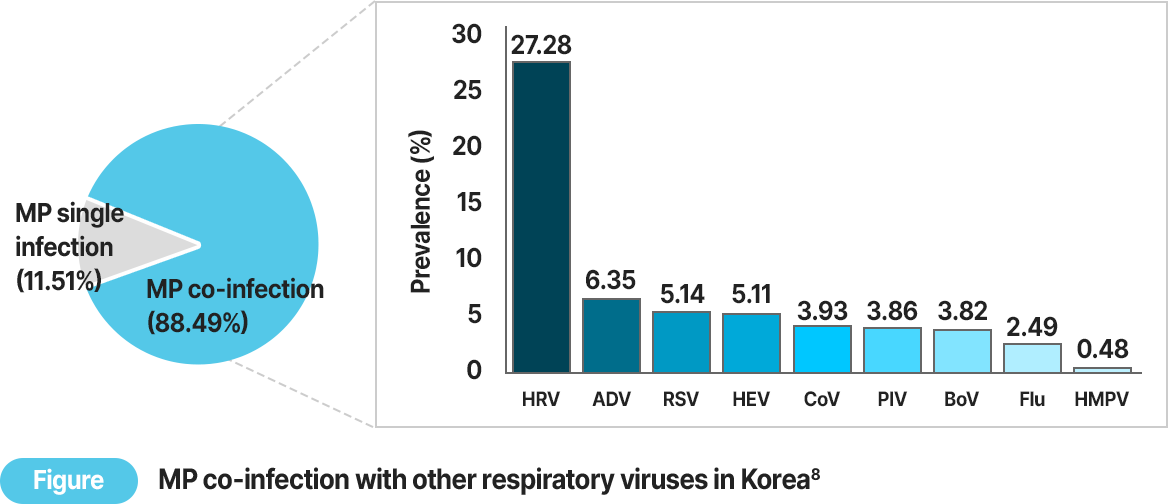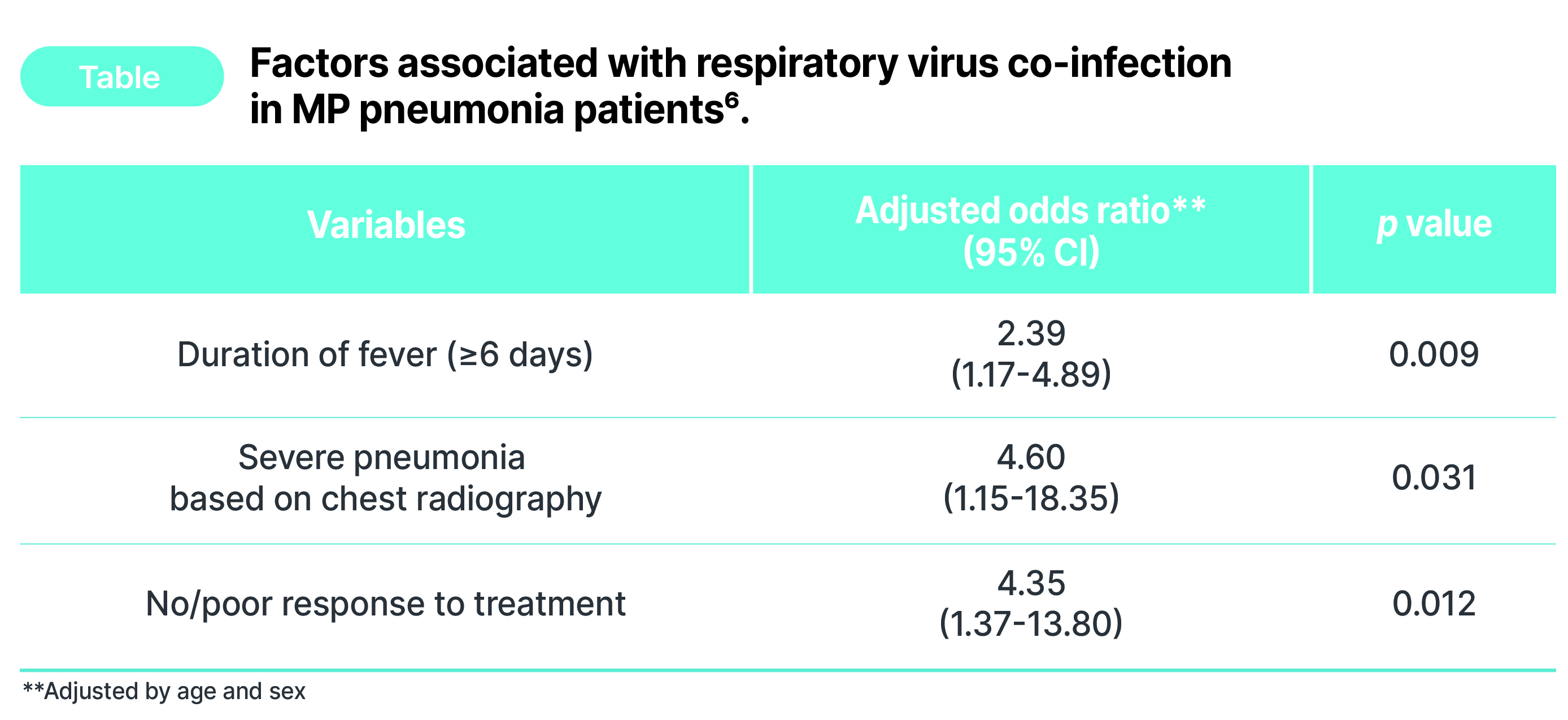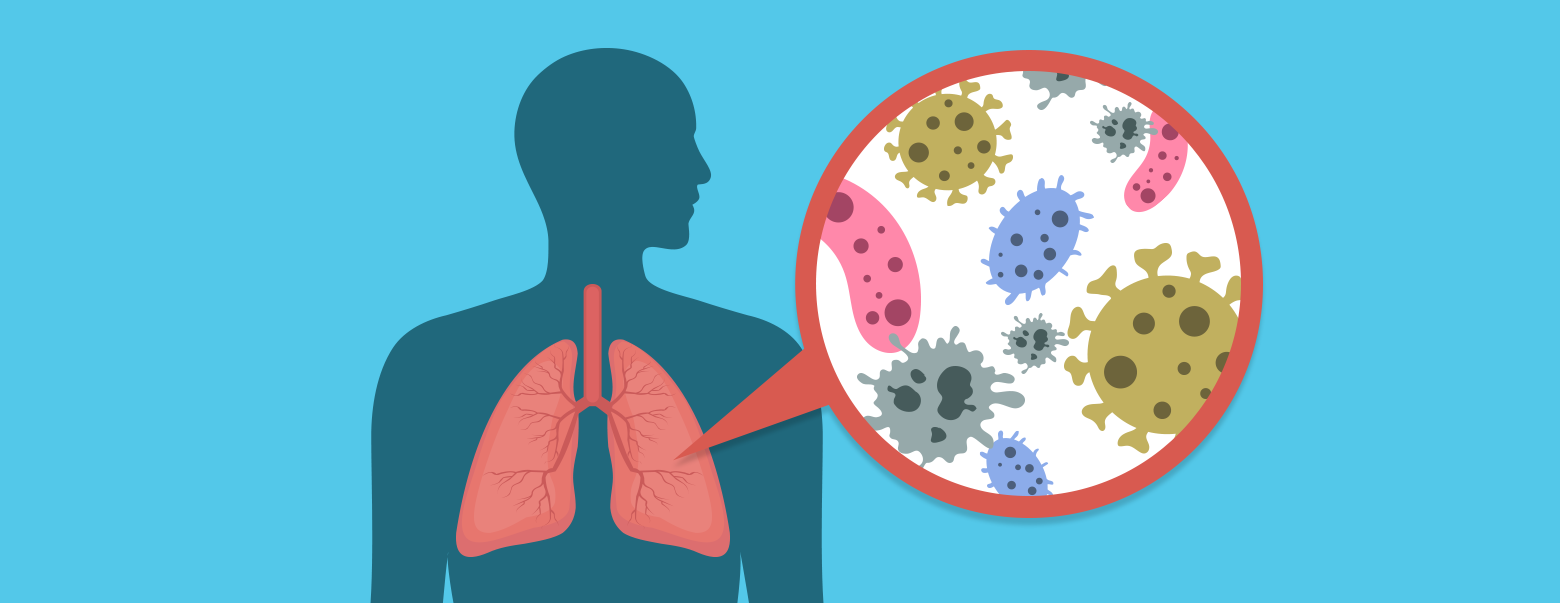Heads Up for the Pneumonia Outbreak, Tip of the Iceberg: Understanding Mycoplasma pneumoniae (MP) Surges

Mycoplasma pneumoniae (MP) Pneumonia Outbreaks: A Global Concern
- In November 2023, China's health authorities reported an uptick in respiratory illnesses in
Northern China, spotlighting MP as the primary culprit1.
- Notably, several European countries, including Denmark, France, Ireland, the Netherlands, Norway, and
Sweden, have also observed a surge in MP infections2-3.Key Concerns
Experts express heightened concerns due to:
- Pandemic-related immunity gap: Reduced exposure to infectious pathogens during the
COVID-19 pandemic has potentially increased susceptibility to MP4.
- High Co-infection Rates: MP shows a significant co-infection rate with other respiratory pathogens,
leading to more severe clinical outcomes5-8.Impact of the COVID-19 Immunity Gap on MP Infections
- The implementation of non-pharmaceutical interventions during the pandemic had initially reduced MP
infection rates. However, this gap in immunity could now lead to increased susceptibility9.
- In 2022, the ESGMAC* group anticipated a surge in MP infections due to reduced exposure during the
pandemic, emphasizing the need for continuous surveillance9.
*ESGMAC: ESCMID study group for Mycoplasma and Chlamydia InfectionsCo-infection Dynamics: MP and Other Respiratory Pathogens
- Research indicates a high prevalence of MP in young children with recurrent respiratory infections,
often in conjunction with other pathogens like Haemophilus influenzae7.
- A study in Korea revealed a concerning co-infection rate of 88.49% between MP and other respiratory
pathogens8.
Clinical Implications of MP Co-infections
- Co-infections between MP and respiratory viruses can lead to severe clinical outcomes,
including refractory MP pneumonia10.- A multi-center study in the USA found that half of the COVID-19 patients were co-infected with MP,
resulting in worse clinical outcomes such as prolonged hospital stays, increased mortality rates, and
higher ventilatory support requirements11.- Variables such as prolonged fever duration, severe pneumonia based on radiography,
and poor treatment response were significantly associated with respiratory virus co-infections in
MP pneumonia patients6.
Syndromic Testing: The Way Forward
In the wake of the immunity gap and increasing co-infection rates, syndromic testing for respiratory pathogens becomes paramount. Seegene offers solutions like Allplex™ Respiratory Panel 1, 2, 3, and 4 Assays, providing extensive coverage for detecting and identifying respiratory pathogens, thereby aiding in effective disease control and patient management.
Conclusion
The surge in Mycoplasma pneumoniae pneumonia cases, compounded by the challenges posed by the COVID-19 pandemic, necessitates vigilant surveillance, effective testing, and proactive measures. As healthcare systems grapple with these uncertainties, comprehensive strategies, including syndromic testing and multi-pathogen detection, will be crucial in mitigating the impact of such outbreaks.

1 Reuters November 24; 2 Finn Maguire Cohen, Dec. 7, 2023; 3 ECDC communicable disease threats report, Week 49;
4 Global Times, Nov. 23, 2023; 5 Zhou et al., 2020; 6 Choo et al., 2022; 7 Koenen et al., 2023; 8 Shin et al., 2023;
9 Sauteur et al., 2023; 10 Tong et al., 2022; 11 Rangroo et al., 2022
Follow us on social media
